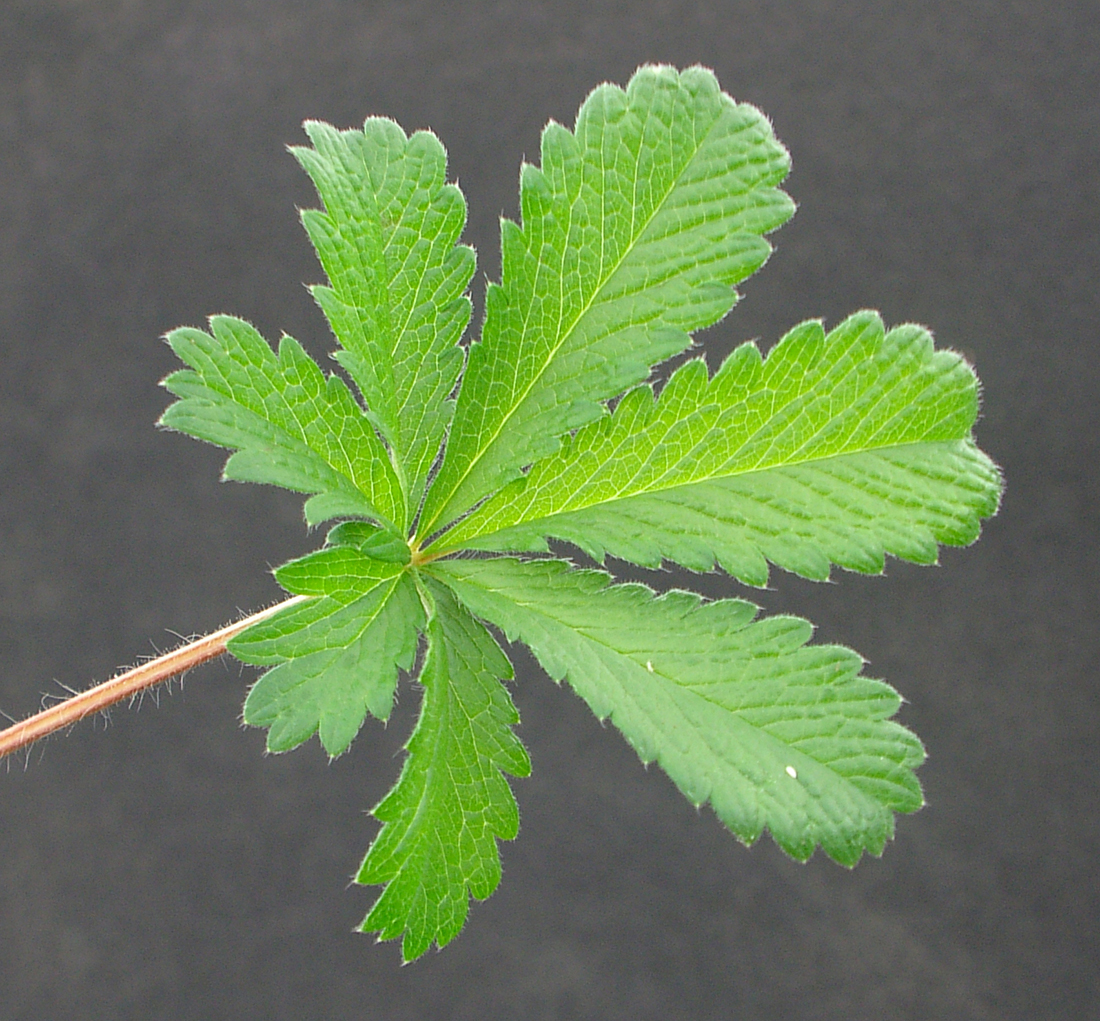Sulphur Cinquefoil
- Rose (Rosaceae family):
- Potentilla recta L.
- EPPO code:
- PTLRC
- Other names:
- Yellow cinquefoil, cinquefoil
Species information
- Lifecycle:
- Perennial.
- Propagation:
- Reproduces by seed.
- Emergence:
- Sulphur cinquefoil seed prefers warm and sunny environments for maximum germination (Werner and Soule, 1976).
- Habitat:
- Sulphur cinquefoil is found most commonly in waste areas and pastures, and along roadsides. Occasionally, it can be found in no-till crop production systems.
- Competitiveness:
- No data exits on the competitiveness of sulphur cinquefoil, but it is not considered a significant weed in agricultural crops. In fact, it is more often considered an ornamental plant.
Identification clues
Seedling
- Cotyledons:
- Orbicular.
- Young leaves:
- The first leaves of sulphur cinquefoil are round to oval and have deeply toothed margins.
- Mature leaves:
- Its mature leaves are palmately compound and made up of five to seven narrow, deeply toothed, hairy leaflets borne on a long hairy petiole (stalk).
Mature plant
- Stem:
- Sulphur cinquefoil’s stem is hairy, grows 20–80 cm tall and branched at the base.
- Flowers:
- Flowers have five, light yellow petals that are 2–2.5 cm across. Fruit: Sulphur cinquefoil’s fruit is 1–1.5 mm long and wrinkly-ridged. Roots: Coarse fibrous root system.
Often mistaken for
I know it's not Rough cinquefoil because sulphur cinquefoil has compound leaves with 5–7 leaflets while rough cinquefoil’s compound leaf has three leaflets.
I know it's not Marijuana because rough cinquefoil is a much shorter plant. Marijuana has compound leaves that are much larger; each plant has more leaflets than rough cinquefoil.



Updated: January 13, 2023
Published: January 13, 2023